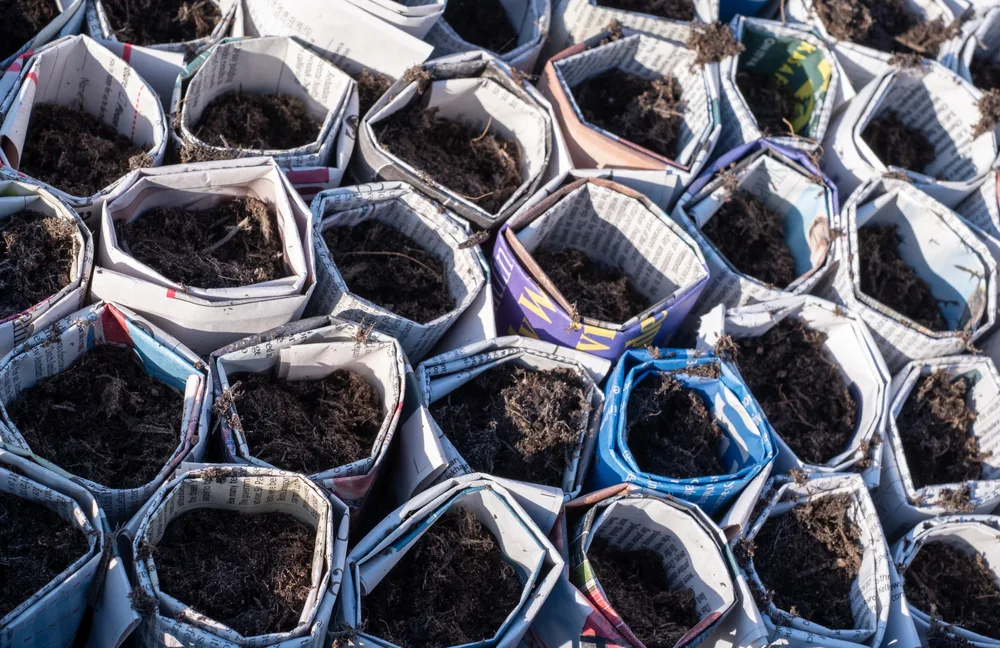Many of us who own homes and tend to gardens are constantly searching for ways to lessen our waste in landfills, enhancing our sustainability.
We construct compost piles in our yards to diminish the food waste we discard and recycle plastics, metal cans, glass bottles, jars, and as much paper as possible.
Apart from contributing old newspapers to our recycling bins, numerous beneficial ways exist to integrate them into the garden.

A discussion exists regarding the safety of introducing newspaper to your garden due to the ink employed in the printing procedure.
Be reassured that it’s acceptable to utilize some of the following applications. Most newspapers nowadays are printed using an environmentally friendly soy-based ink.
1. Arrange the bottom of raised beds
Raised bed gardening is becoming popular in backyards owing to its myriad benefits, ranging from increased yields to easy gardening access for individuals with mobility challenges.
When constructing raised beds, lay newspaper layers at the structure’s base to inhibit weeds from sprouting through the garden soil beneath.
2. Weed barrier beneath mulch
Applying a layer of mulch—pine needles, grass clippings, or commercial bark mulch—effectively retains soil moisture and insulates the soil to nurture flourishing plants.
Moreover, it assists in thwarting weed growth, which competes with your plants for sunlight, water, and nutrients.
To further diminish weeds, spread a layer of newspaper on the soil surface before adding your preferred mulch.
3. Preserve potting soil in containers
When engaging in container gardening, it’s vital to have adequate drainage holes in the bottom of your pots to facilitate the drainage of surplus water from the potting soil.
This prevents the root zone from becoming excessively wet and saturating the roots. However, the downside is that these holes also enable your potting soil to escape.
Line the base of your containers with old newspapers to prevent the soil from spilling out. This will allow the water to drain while the potting soil remains intact.
4. Serve as a stepping stone
Is there a low spot in your garden where water accumulates, forming a muddy patch? A simple, temporary solution is to create a stepping stone in the depression using layers of newspaper.
It will absorb excess water and can be incorporated into the soil at the season’s end.
5. Prepare garden soil for the upcoming season
After harvesting everything in the autumn and clearing plants for the season, many gardeners opt to work the ground in readiness for winter.
When left exposed, pesky weeds are among the first plants to emerge in the spring, necessitating their removal before planting.
Spread a layer of newspapers over the exposed soil surface after tilling the ground in the autumn.
Winter snow and rain will decompose them, yet they will provide adequate coverage in the subsequent spring to impede weed seed germination before planting.
Then, remove them or perforate holes in the newspaper to plant your garden.
6. Augment the carbon ratio in your compost pile
To sustain the functionality of your compost pile, it’s imperative to maintain a balanced ratio of carbon to nitrogen materials.
Carbon or brown materials encompass “dry” items like pine needles, corn stalks, and dried leaves.
Fresh grass clippings and kitchen scraps are nitrogen-rich materials. If your pile lacks carbon, introduce shredded newspapers and thoroughly blend the pile.
This offers a simple method to augment the brown material in your compost pile.
